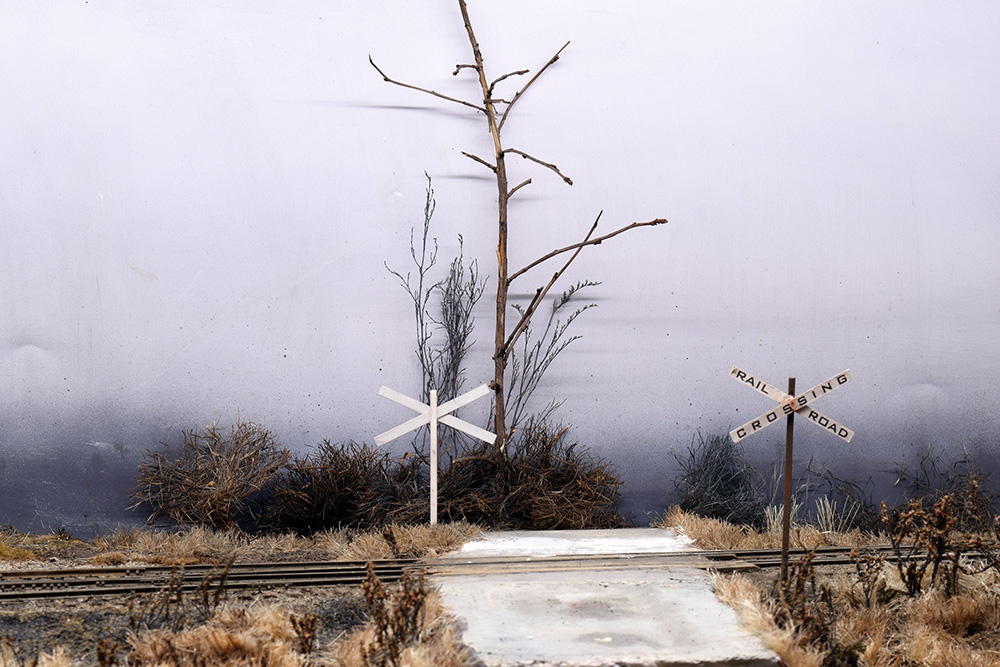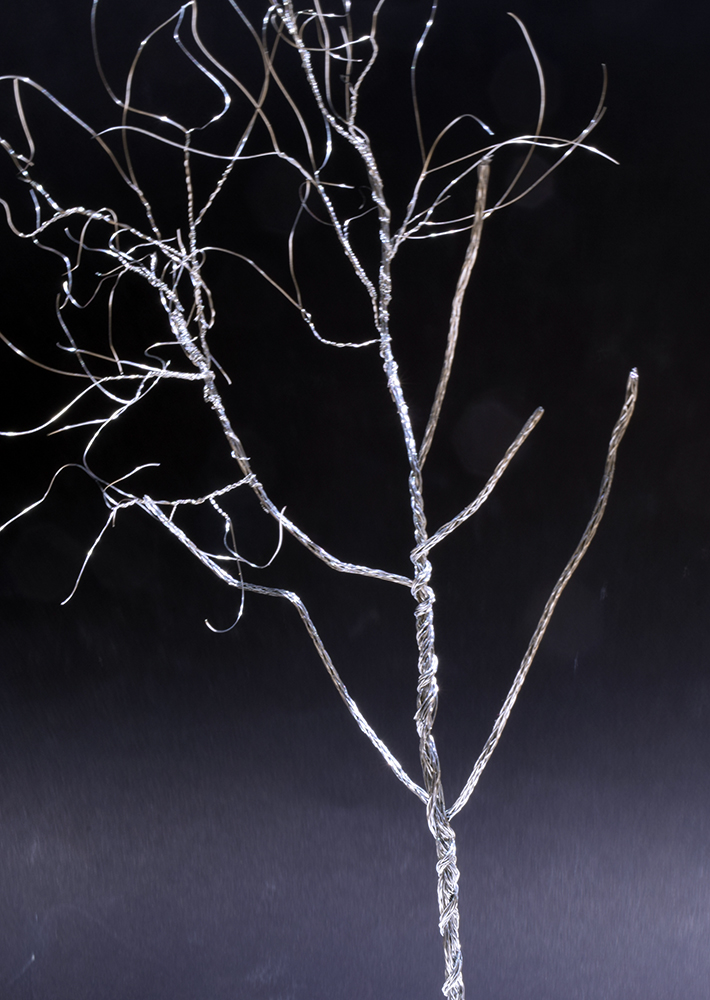In P48, a tree is big enough to be a model in its own right. Several months ago, I placed a stand-in twig near the road crossing to evaluate the impact this tree would have on the rest of the scene. I left this temporary model in place for a long time so I could study it thoroughly. I covered much of my thinking about this stage in two earlier posts, and I will include the relevant links at the end.

To begin the finished model, I made a wire armature for the trunk and major branches from heavy duty picture frame hanging wire. The smaller branches use lighter 24-gauge wire. Yes, the work is involved but then, so are many other aspects that we don’t give a second thought too. The picture frame wire is springy and wants to twist but by twisting together several strands to get the thickness of the main trunk, the results are acceptable. I used the stranded hanging wire because I had plenty of it however, in hindsight; I would start with stiffer wire next time.

My main objective is to reproduce the major lines of the actual sycamore tree. I’m not attempting a branch-for-branch recreation but I am paying closer attention to the shape and placement of the major limbs and trunk, as these are what define the character of the full-size tree. Since this is a winter tree without leaves, I want to step up from a generic form. Making a tree in this manner is no different than building a recognizable structure model.
Since starting this post, I’ve rethought my efforts and have decided to start over with the armature. The armature that you see here is incomplete and I’ve taken that into consideration. However, the tree became top heavy from the added branches and the picture frame wire proved too springy for the extra weight. Looking at the photos, I’m not happy with the form and am certain that no amount of bark covering will hide the shortcomings. I can do better than what I see here.
There are many ways to approach this craft. Each person brings a unique vision and skill-set to the work. In my view, the task is to maintain that individual voice in the cacophony of mind numbing sameness that the generic hobby has become.
Mike
Article Links:
https://www.ostpubs.com/interpreting-trees/
https://www.ostpubs.com/questions-for-modeling-trees-and-other-things/
In that generic language that prioritizes complete things over the process to get there we lose ourselves and maybe truncate the potential of the experience.
I like the progressive approach you took, first to study the effect of the tree in that location. From this you could get a sense of what feels right in the tree’s size and form. Then repetition in the tree’s construction encourages experience and the wisdom that comes with it. All elements in nurturing the wise modeller and that just feels better. The alternative lacks this depth of experience and the emotional value that comes with it.
Chris
That “stand-in twig” very evokes an artist’s preliminary sketches in my mind.
But then, you are an artist, so naturally bring an artist’s sensibilities to the hobby.
I like this.
Thank you gentlemen. I appreciate the comments.-Mike